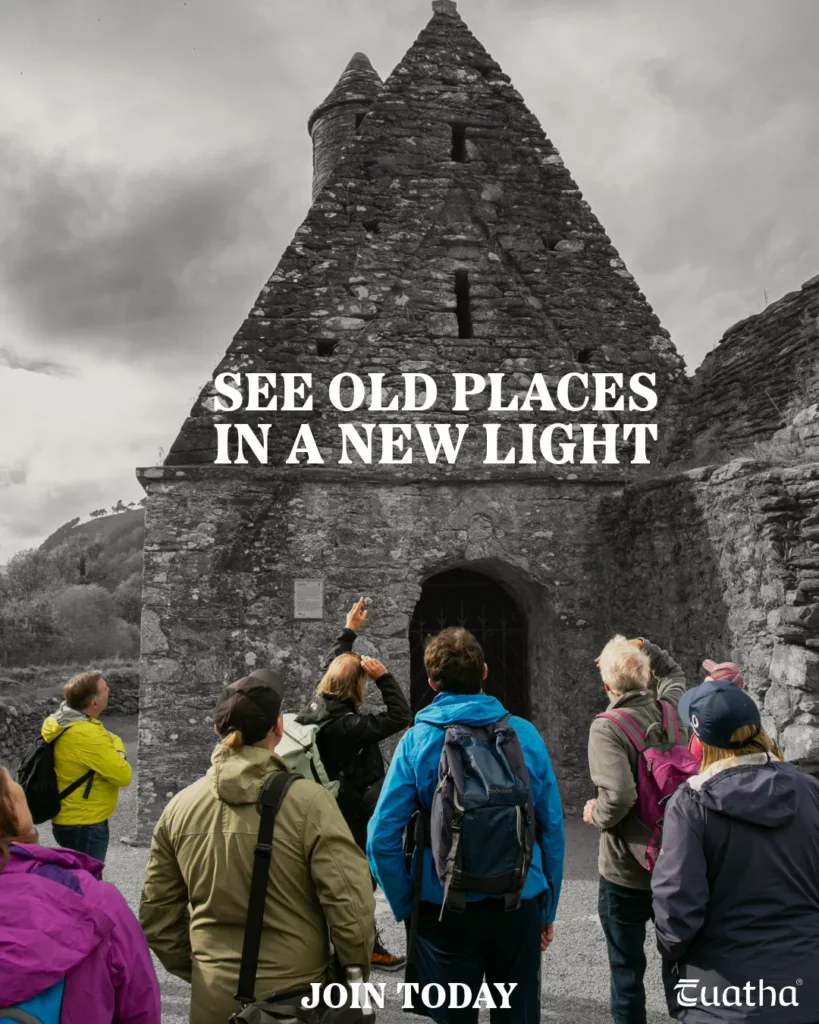Boa Island
The vast waters of Lough Erne covers around one third of County Fermanagh. In the early medieval period this winding lake was used as an important connection between central Ireland and the Atlantic Ocean. There are over a hundred islands in Lough Erne, many of them have extraordinary stories to tell, including Boa Island in the northern part of Lower Lough Erne.
Boa is a long and narrow island, which is now connected to the mainland by a road-bridge at each end. According to the excellent resource, The Northern Ireland Place-Name Project, the name Boa Island derives from Inis Badhbha, meaning ‘Badhbh’s Island’. In Irish mythology, Badhbh is the name of a war goddess, though the original meaning of badhbh was ‘carrion crow’, again suggestive of war.
On the island you can find a small, pleasant, if rather nondescript graveyard called Caldragh Cemetery. But standing incongruously amongst the 19th & 20th century headstones, are two remarkable figures. A larger two-sided stone figure known as the Dreenan Figure, and a smaller single-sided figure known as the Lustymore Man.
The 19th century painter and antiquarian George Victor Du Noyer recorded the Dreenan Figure in 1841 in a series of pencil sketches, but it was Dorothy Lowry-Corry who first brought the remarkable sculptures to the attention of academia in 1933. There was a tradition that there were still the ruins of a church visible in Caldragh Cemetery in 1822, but there are no visible remains today of an early foundation beyond the very faint trace of an enclosure that you can just about make out curving around the northern side of the cemetery on Google Maps Satellite View.
When Dorothy Lowry-Corry found the Dreenan Figure, it was partially sunk into the ground in a tangle of bushes. It was later moved to its present location and placed on a plinth. Around this time a second figure was taken from the disused Christian graveyard on the neighbouring island of Lustymore and eventually placed next to the Dreenan Figure in Caldragh Cemetery for safekeeping, after a brief spell in the home of Lady Ernestine Hunt.
For practical information about visiting this site Click Here
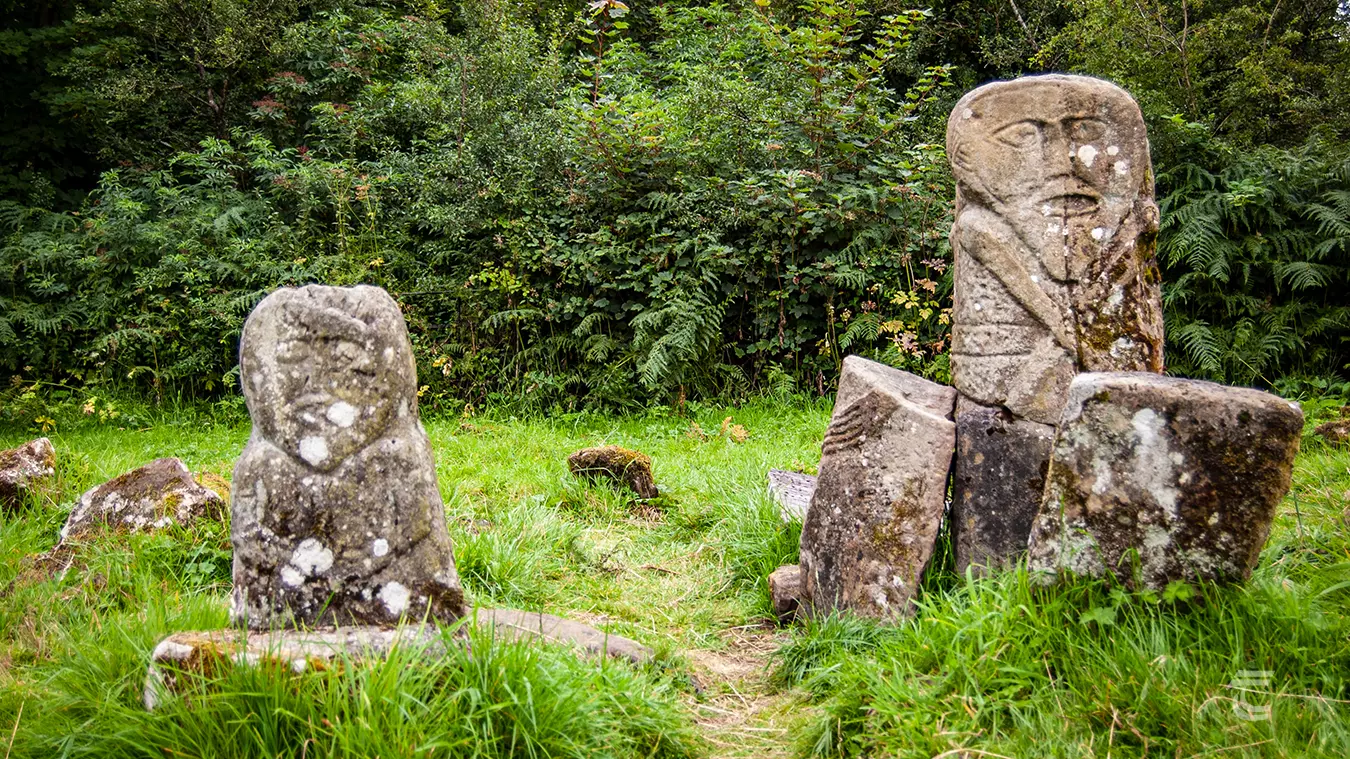
The Lustymore Man (left) and the Dreenan Figure (right) in Caldragh Cemetery, Boa Island • Fermanagh
The Boa Island Mystery
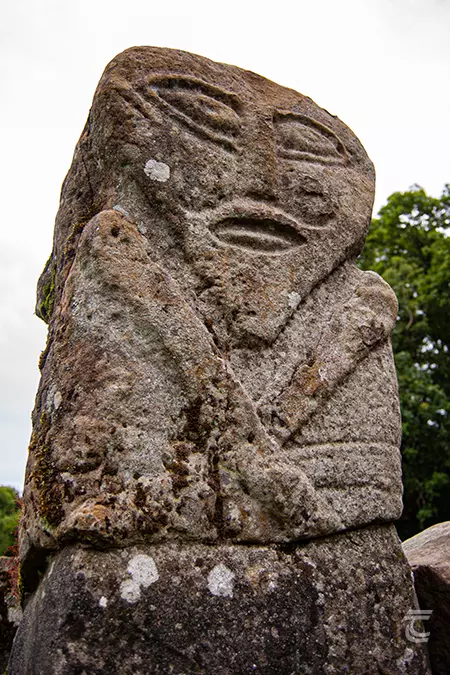
The Dreenan Figure (Janus Stone), Boa Island • Fermanagh
The figures have typically been assumed to be of an Iron Age origin, depicting pre-Christian deities or even connected to Janus, a Roman god of beginnings, gates, transitions, time, duality, doorways, passages, frames, and endings. He is usually depicted with two faces said to represent his ability to look into the past and future simultaneously. However, the Boa Island figures may have a different story. Interestingly, while many compare these figures to sculpture like the Tandragee Man (now in Armagh Cathedral), Dorothy Lowry-Corry suggested similarities between the figures on Boa Island and those of Carndonagh in Donegal.
I’m of a similar mind and lean towards these figures having a potential early medieval origin, as opposed to an Iron Age date. The Dreenan Figure has often been claimed to be a Janus idol, and it is commonly called the Janus Stone – but rather than a pagan idol, could it be similar to the stelae of Carndonagh which have different depictions on the front and back? A possible early medieval date is also supported by the fact that both figures were found on early Christian sites – surely if they were pagan idols they would not have been found in that context? Quite who the figures depict is certainly difficult to ascertain, and they don’t immediately strike me as being obvious representations of typical biblical figures, though it is possible that they depict high status secular figures, or may be an atypical depiction of a Christian figure.
The figures have been compared to other examples from Europe and further afield. Perhaps more tangibly, there are other sculptures believed to be from the Iron Age, like the previously mentioned Tandragee Man now on display in the Church of Ireland Cathedral in Armagh, or the three-faced Corleck Head from County Cavan on display in the National Museum of Ireland. In that sense, it is entirely possible that the figures on Boa Island date to the Iron Age, though it must be noted, to my knowledge neither the Corleck Head nor Tandragee Man were from securely dated contexts, and they too might be from another era than the presupposed Iron Age.
For an archaeologist, context is key, and as the original location of both of the Boa Island figures appears to have been within early Christian monastic sites, I lean towards them being of early Christian origin. We may never be certain in archaeology, you just have to balance the evidence and choose which interpretation is most likely. For that reason I believe that these figures are early medieval and not Iron Age, though we have so comparatively little from our Iron Age that I’m happy to be totally wrong on this one!

The Dreenan Figure (Janus Stone), Boa Island • Fermanagh
The Dreenan Figure (also known as the Janus Stone)
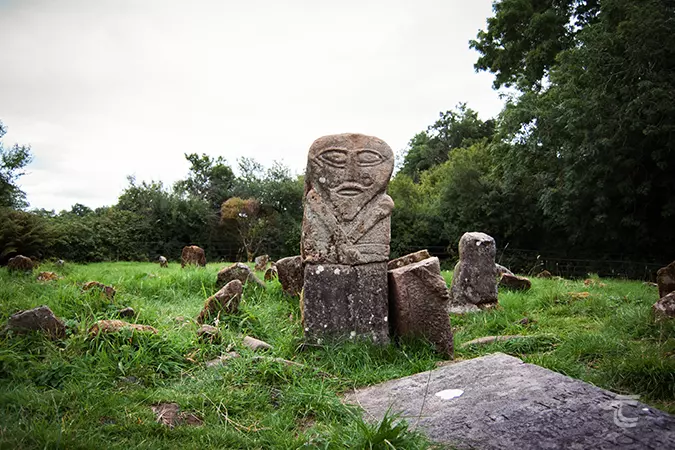
The Dreenan Figure (Janus Stone), Boa Island • Fermanagh
The larger sculpture is two-sided, with depictions of a bearded figure on both sides. Both of the depictions show an oval-faced man with large, almond-shaped, bulging eyes, and a straight nose, but they are not identical. One side has the tongue partially sticking out, and the other seems just have an open mouth. The head merges into the body without a clear neck, and the arms are crossed over what appears to be a belt. The base of the larger sculpture was found at a later time, and is now propped up against the figure. At the top of the heads there is a groove where people today leave coins as an offering.
The Lustymore Man
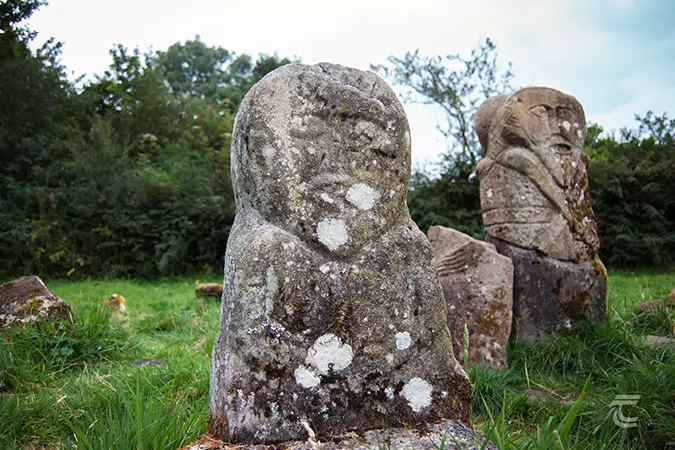
The Lustymore Man, Boa Island • Fermanagh
The smaller figure is called the ‘Lustymore Man’, and was found on the neighbouring Lustymore Island. It appears to be more weathered and more plainly carved. This figure is only one sided, but has a lot of similarities with the larger figure. It seems to also depict a man with a straight nose and open mouth and its arms are resting upon its knees.

The Lustymore Man, Boa Island • Fermanagh
Boa Island Visitor Information
The incongruous stone idols found in the Caldragh Cemetery are a reminder of the many mysteries of the past still left unsolved.
